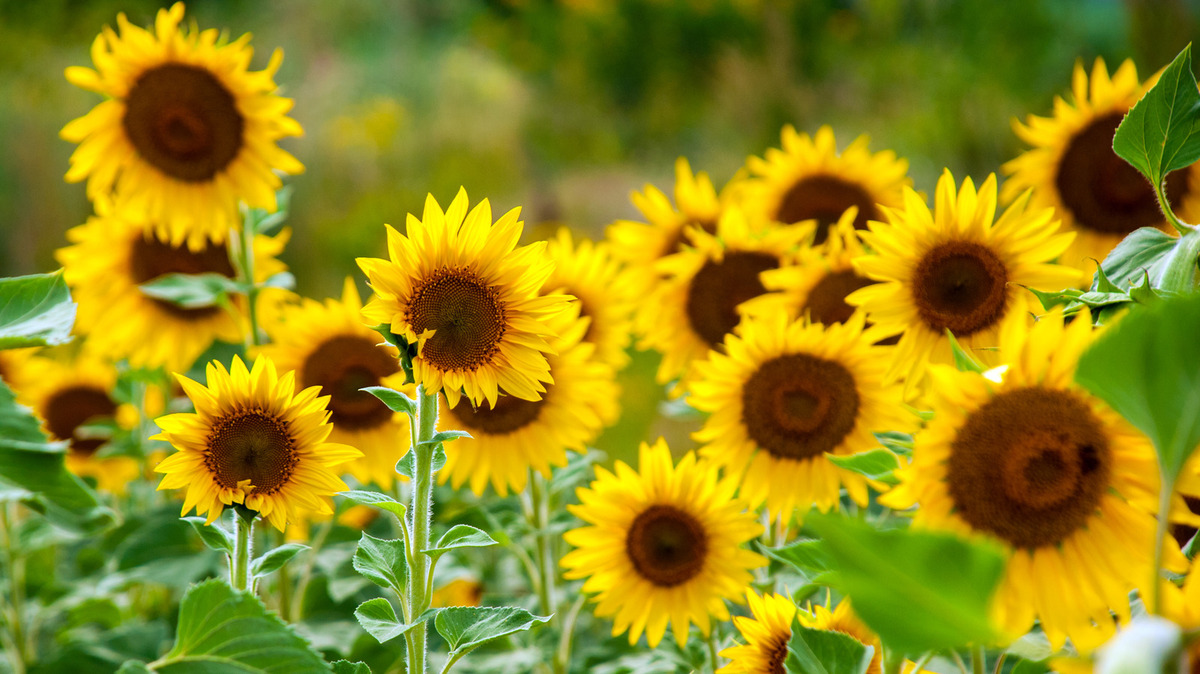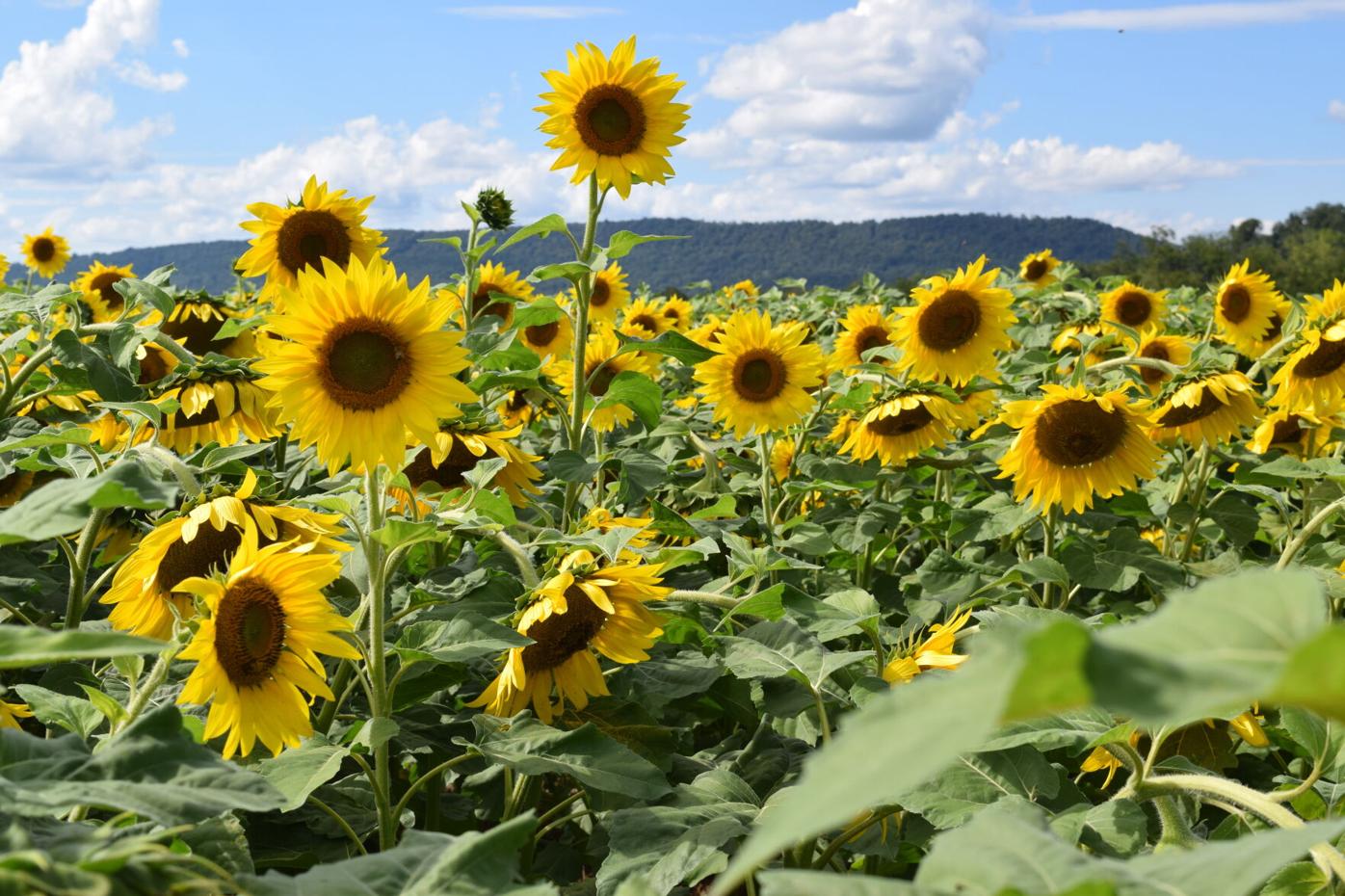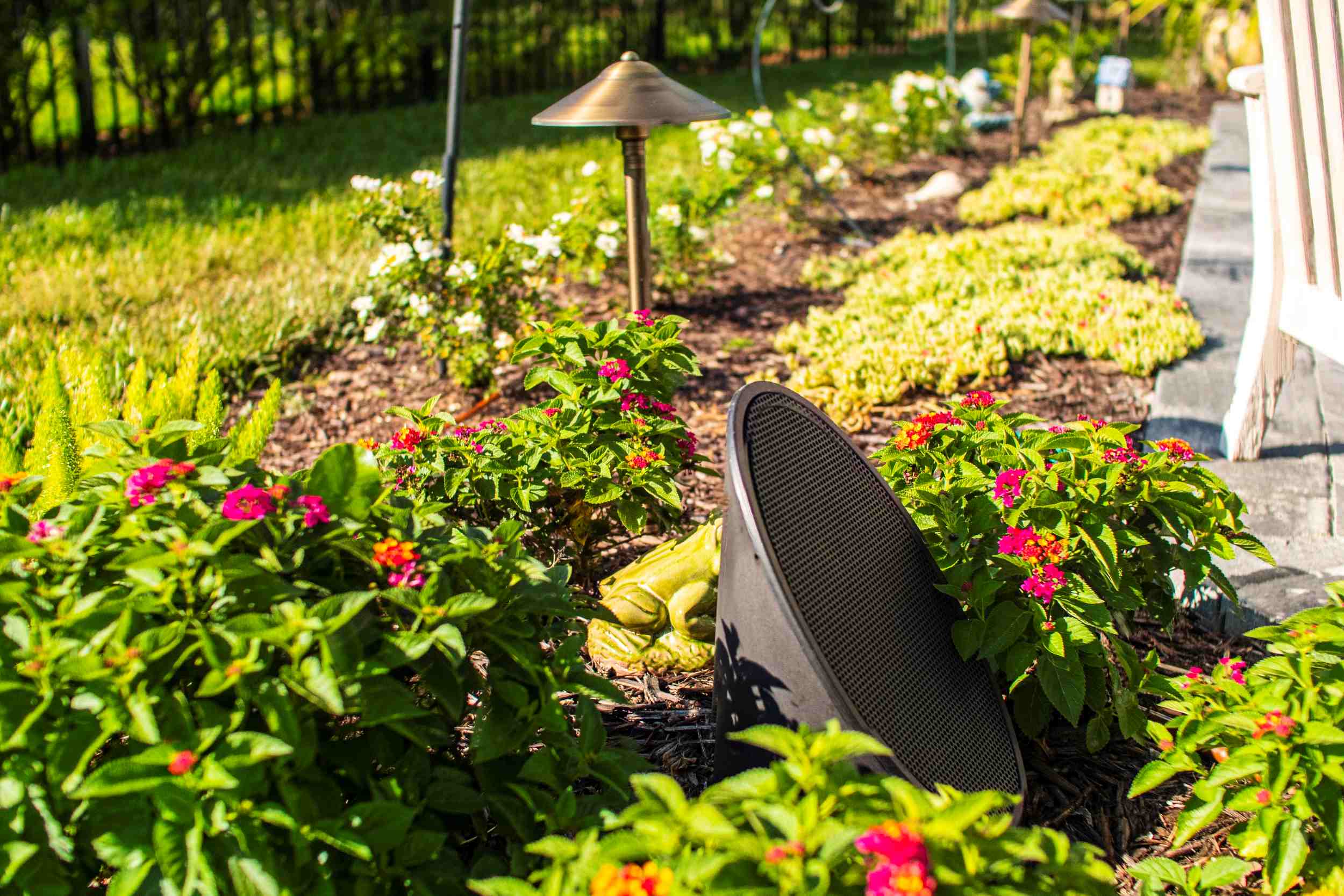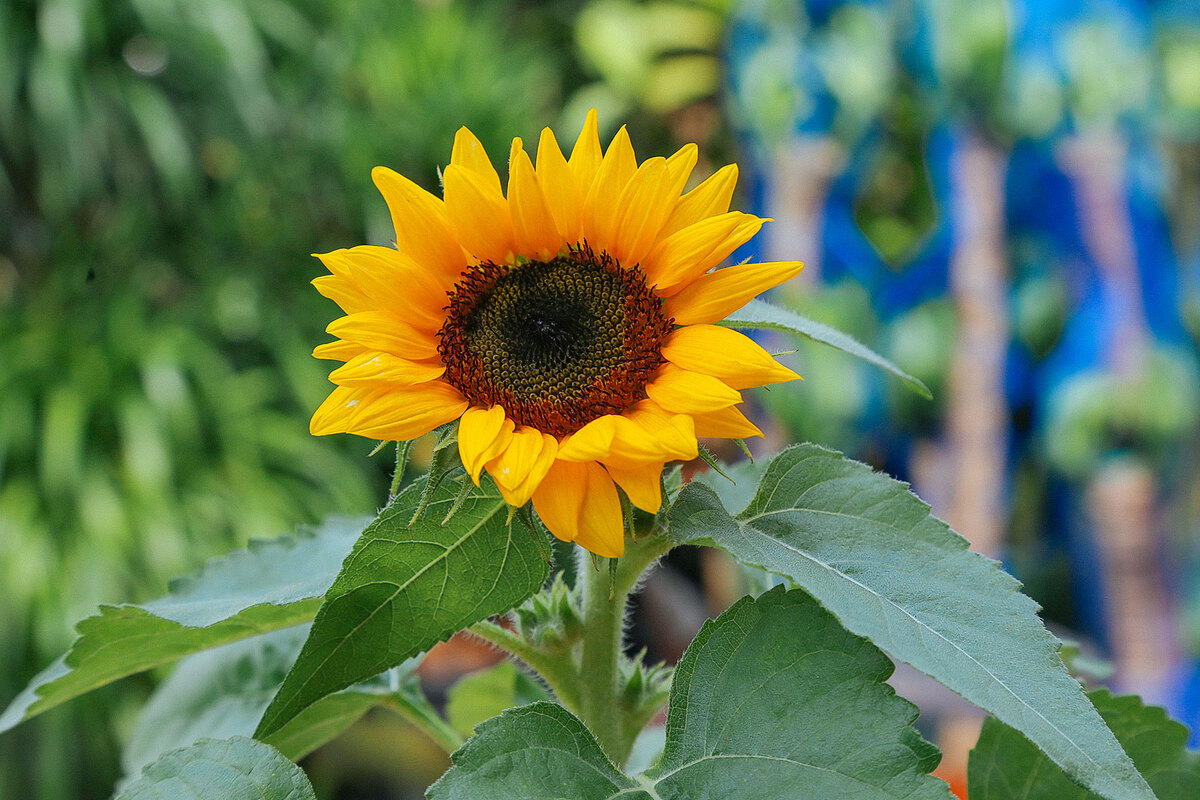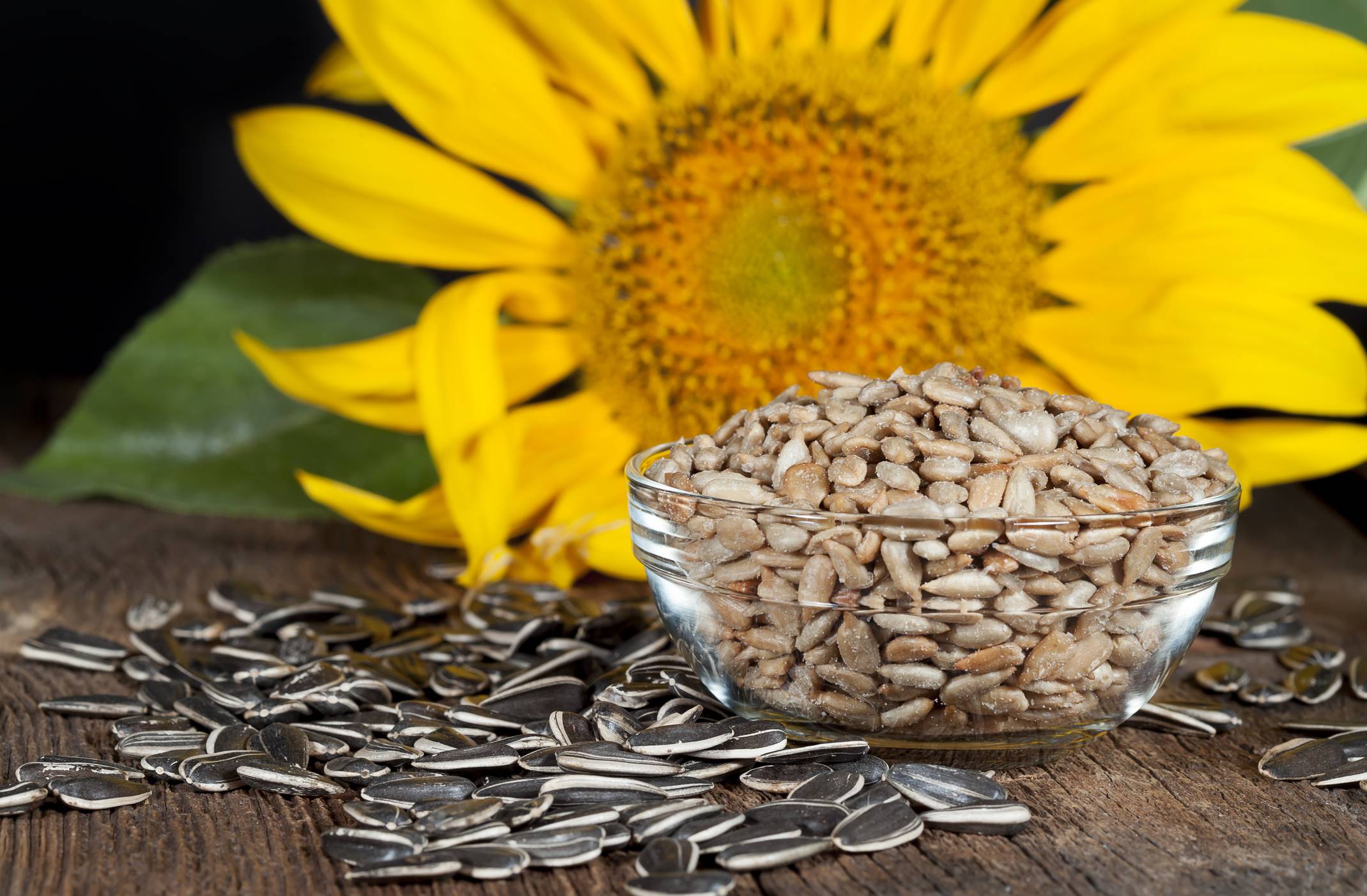Home>Types of Gardening>Ornamental Gardening>When To Plant Sunflowers In Florida
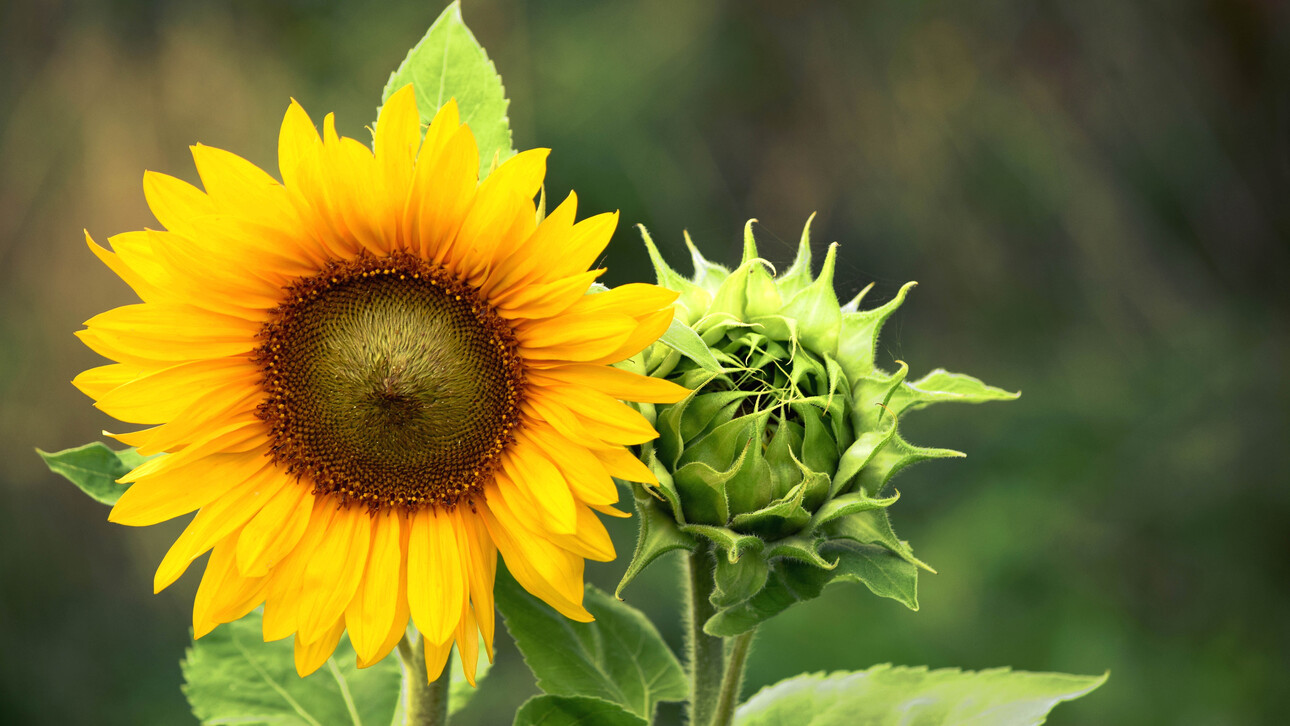

Ornamental Gardening
When To Plant Sunflowers In Florida
Modified: January 22, 2024
Discover the best time for ornamental gardening in Florida with our guide. Learn when to plant sunflowers and create a stunning display in your garden.
(Many of the links in this article redirect to a specific reviewed product. Your purchase of these products through affiliate links helps to generate commission for Chicagolandgardening.com, at no extra cost. Learn more)
Table of Contents
Introduction
Welcome to the vibrant world of ornamental gardening! If you have a passion for growing beautiful plants and creating a stunning outdoor space, then you’re in the right place. In this article, we’ll dive into the art of ornamental gardening with a specific focus on sunflowers in the sunny state of Florida.
Sunflowers are known for their striking beauty, with their bright yellow petals and tall, majestic stems. These iconic flowers not only add a touch of charm to any garden but also serve as a source of food for birds and other wildlife. If you’re planning to grow sunflowers in Florida, it’s essential to understand the unique climate and growing conditions of the state.
In this comprehensive guide, we will explore everything you need to know about planting sunflowers in Florida – from understanding the climate to selecting the right varieties, choosing the ideal planting location, preparing the soil, and nurturing your sunflowers to flourish. Whether you’re a seasoned gardener or a novice enthusiast, this article will provide you with valuable insights and tips to ensure successful sunflower cultivation in the Sunshine State.
So, get ready to roll up your sleeves, grab your gardening tools, and embark on an exciting journey into the world of ornamental gardening with sunflowers. Let’s discover the beauty and joy that sunflowers can bring to your Florida garden!
Understanding the Climate in Florida
Florida is known for its warm and tropical climate, making it an excellent environment for growing a wide variety of plants, including sunflowers. However, it’s essential to understand the specific climatic conditions of the state to ensure the successful growth of your sunflowers.
Florida experiences a humid subtropical climate, characterized by hot and humid summers and mild, relatively dry winters. The state is divided into three USDA hardiness zones: Zone 8 in the north, Zone 9 in central Florida, and Zone 10 in the southern regions. These zones represent the average minimum winter temperatures, which play a crucial role in determining suitable plantings for each area.
When it comes to sunflowers, the warm climate in Florida provides an extended growing season. Sunflowers thrive in temperatures between 70 and 78°F (21-26°C) and require at least six hours of direct sunlight each day. The long, sunny days in Florida make it an ideal location for sunflower cultivation.
However, the intense heat and humidity in Florida can pose challenges, especially during the summer months. Sunflowers may struggle with excessive moisture and humidity, which can lead to the development of fungal diseases. Providing proper air circulation and choosing disease-resistant sunflower varieties can help mitigate these issues.
Florida is also prone to frequent rainfall, especially during the summer rainy season. While sunflowers require regular watering, excessive rainfall can lead to waterlogged soil and root rot. It’s crucial to monitor the moisture levels in the soil and adjust watering accordingly.
Being aware of the climate patterns in your specific region of Florida will help you plan and adapt your gardening practices accordingly. Pay attention to local weather forecasts and consult with local gardening experts for specific recommendations tailored to your area.
Sunflower Varieties for Florida
When it comes to choosing sunflower varieties for your Florida garden, there are several options to consider. Each variety has its unique characteristics, including size, color, and growth habits. Here are some popular sunflower varieties that thrive in the Florida climate:
- Helianthus annuus ‘Russian Mammoth’: This variety is known for its giant size, reaching up to 12 feet in height. ‘Russian Mammoth’ produces large, yellow flowers with brown centers and is a favorite among gardeners looking for a stunning focal point in their gardens.
- Helianthus annuus ‘Teddy Bear’: If you prefer a more compact sunflower variety, ‘Teddy Bear’ is an excellent choice. This dwarf variety grows to about 2-3 feet in height and produces beautiful, fully double, and fluffy yellow flowers. ‘Teddy Bear’ is perfect for small gardens or containers.
- Helianthus annuus ‘Autumn Beauty’: As the name suggests, this variety boasts a stunning array of colors, including shades of yellow, orange, and burgundy. Autumn Beauty’ sunflowers grow to a height of 5-7 feet and produce multiple blooms, creating a vibrant and eye-catching display in your garden.
- Helianthus annuus ‘Sunrich Lemon’: If you’re looking for a unique and striking sunflower variety, ‘Sunrich Lemon’ is a great choice. This variety produces beautiful, lemon-yellow flowers with dark centers. ‘Sunrich Lemon’ sunflowers grow to about 4-5 feet in height and are perfect for adding a touch of elegance to your garden.
- Helianthus annuus ‘Moulin Rouge’: For those who prefer dark and dramatic colors, ‘Moulin Rouge’ is an ideal option. This variety features deep burgundy petals with dark centers, creating a bold and captivating display. ‘Moulin Rouge’ sunflowers grow to a height of 5-6 feet and are sure to make a statement in your garden.
These are just a few examples of the numerous sunflower varieties available for Florida gardeners. When selecting a variety, consider factors such as size, color, and the desired aesthetic for your garden. Additionally, ensure that the selected variety is suitable for the specific climate and growing conditions in your region of Florida.
Remember to check with your local gardening center or consult gardening experts for recommendations on sunflower varieties that thrive in your specific area. Choose a mix of varieties to create a diverse and visually appealing sunflower display in your Florida garden.
Choosing the Right Location for Planting
Choosing the right location is paramount for successful sunflower growth and development. Here are some key factors to consider when selecting the perfect spot for your sunflowers in Florida:
- Sunlight: Sunflowers are sun-loving plants and require at least six hours of direct sunlight each day. Select a location in your garden that receives ample sunlight, preferably in the morning or early afternoon when the rays are less intense.
- Protection from Wind: While sunflowers love sunshine, they can be susceptible to wind damage, especially during storms or strong gusts. Choose a location that is sheltered from strong winds, such as near a fence, wall, or other tall plants that can provide some wind protection.
- Space: Sunflowers need plenty of space to spread their roots and grow tall. Ensure that the location you choose provides adequate room for the desired size of the sunflower variety you are planting. Consider how tall and wide the sunflowers will grow and space them accordingly to avoid overcrowding.
- Soil Quality and Drainage: Sunflowers thrive in well-draining soil with a pH level between 6.0 and 7.5. Avoid locations with heavy clay soil or areas that tend to accumulate water, as this can lead to root rot and other moisture-related issues. If your soil lacks drainage, consider amending it with organic matter or planting sunflowers in raised beds or containers.
- Proximity to Other Plants: Sunflowers are known to allelopathic, meaning they release chemicals that inhibit the growth of certain plants around them. Avoid planting sunflowers too close to other susceptible plants, especially those in the same family, such as other members of the Asteraceae family.
Additionally, assess the aesthetics of the selected location. Sunflowers can serve as beautiful backdrops or focal points in your garden, so choose a spot that enhances the overall visual appeal of your outdoor space.
By considering these factors, you can create the ideal environment for your sunflowers to thrive and become a stunning addition to your Florida garden. Remember to plan ahead and ensure that the selected location can accommodate the growth and space requirements of your sunflower variety.
Preparing the Soil
Preparing the soil is a crucial step in ensuring healthy and robust sunflower growth. By providing the right nutrients and soil conditions, you can create an optimal environment for your sunflowers in Florida. Here are some steps to prepare the soil for planting:
- Clear the area: Begin by removing any weeds, rocks, or debris from the planting area. Clearing the area ensures that the sunflowers have ample space to grow and reduces competition for nutrients.
- Loosen the soil: Sunflowers prefer loose and well-draining soil. Use a garden fork or tiller to loosen the soil to a depth of 12-18 inches. This process helps improve aeration, drainage, and root penetration.
- Test the soil: Conduct a soil test to determine its pH level and nutrient composition. Sunflowers thrive in slightly acidic to neutral soil, with a pH range of 6.0 to 7.5. If the pH is too low or high, amend the soil accordingly to bring it within the desired range.
- Add organic matter: Incorporate organic matter, such as well-rotted compost or aged manure, into the soil. This helps improve soil fertility, structure, and moisture-retention capabilities. Spread a layer of organic matter over the planting area and mix it thoroughly into the soil.
- Apply balanced fertilizer: If the soil test indicates nutrient deficiencies, apply a balanced fertilizer with equal amounts of nitrogen, phosphorus, and potassium. Follow the manufacturer’s instructions for application rates, as excessive fertilizer can harm the sunflowers.
- Level the soil: Once the amendments and fertilizer are added, level the soil surface using a rake or garden tool. This ensures an even planting surface and helps prevent water pooling or runoff.
It’s important to note that sunflowers are relatively tolerant of different soil conditions. However, providing well-prepared soil with proper drainage and adequate nutrient levels will enhance their growth and overall health.
By following these steps and taking the time to prepare the soil properly, you set the foundation for successful sunflower growth in your Florida garden. Healthy soil creates a thriving environment for your sunflowers, allowing them to reach their full potential and produce stunning blooms.
Planting Sunflower Seeds
Now that you have prepared the soil, it’s time to plant your sunflower seeds. Follow these steps for successful sunflower seed planting in your Florida garden:
- Select the right time: In Florida, sunflowers can be planted from late winter to early summer. The optimal time to plant sunflower seeds is when the soil temperature reaches around 55-60°F (13-16°C). This typically occurs in late February to early March, depending on your specific location.
- Choose the planting method: You have two options for planting sunflower seeds: direct sowing or starting seeds indoors. Direct sowing involves planting the seeds directly in the ground, while starting seeds indoors allows you to give them a head start before transplanting them outdoors.
- Direct sowing: If you choose to direct sow, make sure the soil is well-prepared and free of any clumps or large debris. Dig a small hole that is 1-2 inches deep. Place 2-3 sunflower seeds in each hole, spacing them 6-12 inches apart. Cover the seeds with soil and gently pat it down.
- Starting seeds indoors: For indoor starting, sow sunflower seeds in small containers filled with seed starting mix. Plant the seeds 1 inch deep and keep the soil moist. Place the containers in a warm and bright location, such as a sunny window or under grow lights. Once the seedlings have developed a few sets of true leaves, they can be transplanted outdoors.
- Watering: After planting, water the soil gently to ensure that it remains moist but not waterlogged. Sunflowers require regular watering, especially during periods of dry weather. Be careful not to overwater, as this can lead to root rot. Water at the base of the plants to avoid wetting the foliage, which can attract fungal diseases.
- Maintain spacing: As your sunflowers grow, ensure that they have adequate space between them. Depending on the variety, this typically ranges from 6-24 inches. Proper spacing allows each sunflower to receive sufficient sunlight and air circulation, reducing the risk of disease and promoting healthy growth.
Keep in mind that sunflowers have a taproot system, which means they develop a long central root. Avoid transplanting sunflowers once they have established their roots, as it can cause transplant shock. It’s best to sow sunflower seeds directly in the ground, or if starting indoors, transplant them while they are still young and haven’t developed significant roots.
By following these steps and paying attention to proper planting techniques, you can ensure successful sunflower seed emergence and establish a strong foundation for your sunflower garden in Florida.
Watering and Fertilizing
Proper watering and fertilizing practices are essential for ensuring the healthy growth and development of sunflowers in your Florida garden. Here are some guidelines to help you water and fertilize your sunflowers effectively:
- Watering: Sunflowers require regular watering, especially during dry spells. Aim to keep the soil consistently moist but not waterlogged. Water deeply at the base of the plants, directing the water towards the roots. Avoid overhead watering, as wet foliage can promote the growth of fungal diseases.
- Establishment phase: During the early stages of sunflower growth, focus on providing sufficient moisture to support root development. Water the plants deeply once or twice a week, depending on the weather conditions. Adjust the watering frequency based on the rainfall in your area.
- Mature plants: As sunflowers grow taller and their roots expand, they become more tolerant of drought. However, they still require regular watering, especially during periods of prolonged dryness. Monitor the soil moisture levels and water deeply when the top few inches of soil feel dry.
- Fertilizing: Sunflowers are relatively low-maintenance plants and do not require excessive fertilization. However, they can benefit from a balanced fertilizer application to support healthy growth. Use a slow-release granular fertilizer or a well-balanced liquid fertilizer, applying it according to the package instructions. Avoid over-fertilizing, as this can lead to excessive foliage growth at the expense of flower production.
- Organic fertilizers: If you prefer organic options, you can use compost, well-rotted manure, or organic slow-release fertilizers. These natural amendments enrich the soil and provide the necessary nutrients for sunflower growth. Apply organic fertilizers around the base of the plants, following the manufacturer’s instructions.
- Supplemental feeding: If you notice signs of nutrient deficiency, such as pale or yellowing leaves, you can apply a foliar spray of liquid fertilizer. This allows nutrients to be quickly absorbed by the leaves and provide a boost of nourishment to the plants. However, it’s important not to rely solely on foliar feeding and to ensure that the soil is adequately enriched.
Regular observation and monitoring of your sunflowers will help you determine their watering and fertilizing needs. Adjust your watering and fertilizing practices based on the specific requirements of the sunflower variety and the environmental conditions in your Florida garden.
Remember, striking the right balance with watering and fertilizing is crucial. Too much or too little of either can lead to adverse effects on sunflower growth and overall health. Keeping a consistent and attentive approach to watering and fertilizing will help your sunflowers thrive in your Florida garden.
Protecting Sunflowers from Pests and Diseases
Like any other plants, sunflowers in your Florida garden are susceptible to pests and diseases. Implementing preventative measures and early intervention can help protect your sunflowers and ensure their health and vitality. Here are some tips to protect your sunflowers from common pests and diseases:
- Pest identification: Familiarize yourself with common pests that affect sunflowers, such as aphids, caterpillars, slugs, and snails. Regularly inspect your sunflowers for signs of pest activity, including damage to leaves, wilting, or the presence of insects. Early detection will allow for prompt action.
- Natural pest control: Encourage natural predators, such as ladybugs, lacewings, and birds, to help control pest populations. Planting companion plants, like marigolds or cosmos, can attract beneficial insects that prey on harmful pests. Consider using insecticidal soaps or neem oil, which are effective organic options for pest control.
- Disease prevention: Monitor your sunflowers for signs of diseases such as powdery mildew, downy mildew, or fungal leaf spots. To reduce the risk, ensure proper air circulation by providing adequate spacing between plants. Avoid overhead watering, as wet foliage can promote fungal growth. Applying a preventative fungicide can also help protect your sunflowers from fungal infections.
- Weed management: Keep your sunflower beds free from weeds, as they can harbor pests and diseases. Regularly remove weeds around the sunflowers to reduce competition for nutrients and minimize the risk of pest infestation or disease spread.
- Regular inspection: Conduct frequent inspections of your sunflowers, checking the leaves, stems, and flowers for any abnormalities. Look for discolored or distorted leaves, wilting, or unusual growth patterns. Early detection of pest or disease issues will allow you to take immediate action and prevent further damage.
- Proper sanitation: Proper sanitation practices are essential to prevent the spread of diseases. Remove and destroy any infected or diseased plant material. Avoid composting infected plants, as it can contribute to the propagation of diseases. Clean your garden tools after each use to prevent the transfer of pests or pathogens.
By implementing these preventive measures and promptly addressing any pest or disease issues, you can protect your sunflowers and maintain their health and beauty throughout the growing season in your Florida garden.
Harvesting Sunflowers
The time has come to reap the rewards of your hard work in nurturing your sunflowers. Harvesting sunflowers in your Florida garden is an exciting and rewarding process. Here are some guidelines to ensure a successful sunflower harvest:
- Determine the right harvest time: Sunflowers are ready for harvest when the back of the flower heads turn from green to yellow or brown. Additionally, the petals will start to wither, and the seeds in the center of the flower will become plump and develop a slightly darker color. Harvesting too early will result in underdeveloped seeds, while harvesting too late may lead to seed loss.
- Protect the seeds: Before harvesting, it’s important to protect the seeds from being devoured by birds or other wildlife. Consider covering the flower heads with a mesh bag or pantyhose, securing it tightly around the stem. This will prevent animals from accessing the seeds while still allowing air circulation.
- Use sharp shears or a knife: When harvesting sunflowers, use clean and sharp shears or a knife to cut the stem about 4-6 inches below the flower head. Opt for a diagonal cut to expose more surface area for water absorption if you plan to display the sunflowers in a vase.
- Dry the flower heads: After harvest, hang the sunflower heads upside down in a well-ventilated area, away from direct sunlight. This allows the flowers to dry naturally. As they dry, the seeds will continue to mature and fully develop. After a few weeks, gently rub the seeds out of the flower head using your hands or a stiff brush.
- Store the seeds: Once the seeds are fully dried, store them in a cool, dry place in airtight containers. Label the containers and ensure they are kept away from moisture and pests. Properly stored sunflower seeds can be used for planting in subsequent seasons or for roasting and enjoying as a tasty snack.
- Displaying cut sunflowers: If you plan to display cut sunflowers in a vase, remove any leaves that will be submerged in the water. Fill the vase with fresh water, and consider adding flower preservatives to prolong the vase life. Change the water every few days and trim the stems at an angle to enhance water uptake.
Harvesting sunflowers is a gratifying experience that allows you to enjoy the beauty of the flowers and reap the benefits of the sunflower seeds. Take care in harvesting and storing the seeds properly to ensure their quality and keep the sunflower spirit alive in your Florida garden.
Conclusion
Congratulations on diving into the world of ornamental gardening with sunflowers in Florida! With their vibrant colors, majestic height, and striking beauty, sunflowers can truly transform your garden into a visual delight. By understanding the unique climate of Florida and selecting the appropriate sunflower varieties, you have taken the first steps towards a successful sunflower growing journey.
Remember to choose a location that provides ample sunlight and protection from strong winds. Prepare your soil with care, providing proper drainage and nutrient-rich amendments. When planting sunflower seeds, consider the right timing and choose between direct sowing or starting seeds indoors. Water and fertilize your sunflowers adequately, paying attention to their watering and nutritional needs.
Protecting your sunflowers from pests and diseases is crucial for their health and longevity. Implement natural pest control methods and maintain optimal growing conditions to mitigate pest infestation risks. Regular inspections and proper sanitation practices can help detect and prevent disease issues.
When the time comes, harvesting sunflowers is an exciting process. Wait for the flower heads to mature and protect the seeds from birds. Properly dry and store the seeds for future use or enjoy them as a delicious snack. If you choose to display cut sunflowers, take care to provide proper water and vase maintenance for prolonged enjoyment.
May your sunflower journey in Florida be filled with joy, beauty, and successful gardening experiences. Embrace the art of ornamental gardening and savor the splendor that sunflowers bring to your outdoor space. Happy gardening and may the sunshine always follow your sunflowers!
